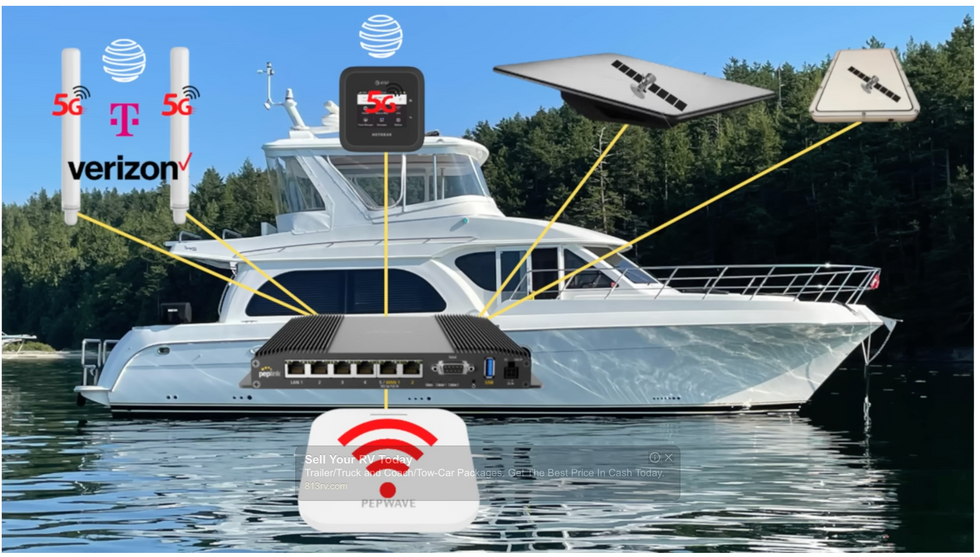Yacht Internet & Communication: Starlink In-Motion Communication
- Chris Leigh-Jones
- Feb 21, 2023
- 3 min read
Updated: Apr 20, 2023
There is an English phrase associated with problems that can "feel like spinning plates." I think this translates into American English. I would use the rapid development of marine communications as an example of that scenario with many moving parts.
Yacht Internet & Communication: Our Problem
Some weeks ago, we published a blog (link below) about our intention to install a OneWeb low earth orbit communication system. Well, that was the intention. I will pause here and state that my communications with OneWeb have been excellent, as has their franchise's support. However, as we have drawn closer to global availability, the economics have been clarified. Regardless of the system's merits, it will not work for our purse strings. So we have to think again, and here we will reference spinning plates. Some months ago, a Blog reader offered feedback that designs should be firmly established before construction. I wholeheartedly agree with this sentiment though the reality of this topic is that options have changed fundamentally in the time between the start and end of the build.
Read also: Outfitting for Arctic Yachting
Starlink In-motion Yacht Communication System?
When we first investigated Starlink, the application was georeferenced.
i.e., the user's locked within a geographic boundary outside of which it would no longer operate. In late 2021 they began offering a system that would work with Recreational Vehicles (RVs), which was a good step in a helpful direction but still did not provide a solution. Then they launched a "Marine" offering. Great for a budget based on commercial marine applications, but it's a competitor of OneWeb with a similar pricing model. So still no solution for us. In late 2023 they began offering an "In-Motion" solution, something like $2500 for the aerial assembly and $150 p.m. to operate - but what are we buying?
(Not our boat) -Starlink In-Motion connection via Pepwave Router.
The system consists of a medium-sized phased array aerial positioned facing upwards. Phased array aerials electronically track the connected satellites, the benefit is no moving parts. (OneWeb's twin Kymeta aerials work on the same principal. ) The surface is angled to limit snow build-up and is optionally heated. Download and upload speeds are variable with Starlink offering a "best effort" depending on local demand. There will be minor outages but we can live with that. The wind rating is <170MPH, and the weather resistance is IP57 (dust and rain proof). Any signal from this is fed directly to a router. An external power supply interconnects with proprietary power and ethernet cables. It draws about 150/200W, so we might switch this off when unused. Vanguard's existing Pepwave router can replace the one provided. That will allow signals to be multiplexed across Starlink, Cell Phones, and local WIFI sources, providing redundancy and backup when near land.
I found an explanation of the Starlink family on Youtube, my go-to when knowledge fails me.
Coverage is growing but also limited to N America, Europe, and Australasia. It is snowballing though polar regions remain unaddressed. We have Iridium Sailor 4300 system for that requirement.
Yacht Communication System Price
Price-wise, it's night and day different for both the Starlink Marine offering and OneWeb. But I would also emphasize that it is a lesser product that can perhaps do 70% of what we wish. You will be looking at some $2500 for the aerial and <$150 per month in connection fees for In-Motion Starlink. There remains an issue of which country you are registered in and I believe you have a 60-day window for wandering. Again we can address that at a. later date depending on our itinerary.
Chris Leigh-Jones
Ut vivas in mutantur tempora: May you live in exciting times. (that's Google Translate, I'm no scholar)















A quick comment.
- I believe it is geofenced to a single continent at this stage. I can take my Starlink anywhere in Europe, but not across the pond.
Dunno how it works if you want to - a new account maybe?
- Coverage at high latitudes is still very patchy. I am evaluating one unit (i have multiple) at 65+ N, map shows coverage, in reality it is maybe 50% of the time.
- They just raised the prices, and they will do again I suppose. RV aka roaming is now 150 usd / mth.
- It still won't work offshore at the moment, not without the emerald pearl diamond -priced marine package.
Andy